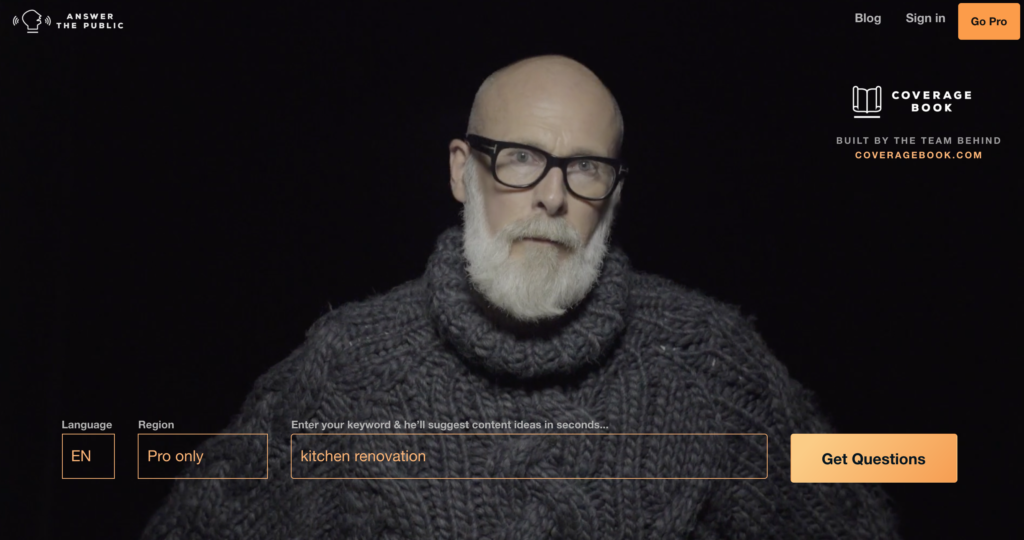As TV ads decline, more people are watching, sharing, and engaging with video on social media. That means for marketers, it’s time to build a strong Facebook video strategy.
While Facebook’s algorithm continues to de-prioritize content produced by Pages, videos are still your best bet when it comes to attracting and engaging your audience. But if your videos aren’t tied to a strategy, you might as well be working in the dark.
One stunning statistic from a 2018 report states that marketers who document their strategy are 538% more likely to be successful. With Facebook, you need to set concrete goals and a direct path to achieving them.
We want to help you think of your Facebook video marketing strategy as you would a TV series, with the same clarity of theme, audience, and purpose. You wouldn’t create a series such as iZombie and then only market it to people who hate comics, science fiction, and sitcoms. Why should your marketing videos be any different?
Ask 2 big questions to drive your Facebook video strategy
Before you take any steps toward creating a video, answer these questions to kick off your Facebook video strategy:
- Why are you creating those videos?
- Who are those videos for?
First, you need to think beyond simply getting people to buy stuff, though conversion and ad ROI are important benchmarks to set later. According to Tim Hughes, 40% of people have declared they’d rather have root-canal surgery than listen to a sales pitch. That’s a lot of people you risk turning off if your priority is leads and sales.
What are good starting objectives for your videos? Pick one of these three basic goals:

- Entertain. Delight viewers with content that is gripping, distracting, and fun to watch.
- Educate. Teach people something new.
- Inspire. Stir emotions that motivate people to take action
The majority of Facebook videos fall into one of those three categories. Which one best fits your branding and company? Picking one will help the other elements of your Facebook video strategy fall into place.
Second, you need to decide who your videos will be for, as this will absolutely determine what kind of videos to create. Think beyond demographics, useful as these can be, and ask the following:
- What are their hobbies/interests?
- What household or workplace role do they occupy?
- Where do they like to consume content and how?
- How do they describe themselves?
Answering “why” and “for whom” will add meaning behind your content. Ideally, make your answers into a one-line sentence, and post this sentence at the top of any further planning documentation so you don’t deviate from it.
Understand your audience to develop your concept
So now you know why and for whom you’re creating videos. That’s a great start, but how do you develop that into a fully fleshed-out Facebook video strategy? This should all develop from your one-liner answers into deeper research.
As an example, let’s look at this one-liner:
“We want to create videos that educate and empower new homeowners about doing DIY renovation projects.”
Your first step is to do some deeper research into these new homeowners to determine what content they would find educational and helpful.
One useful resource for discovering pain points and drivers is Answer the Public, which gathers questions typed on Google and Bing, per keyword. For example, if you type “kitchen renovation,” results include “what to eat during kitchen renovation.” This automatically gives you ideas for content strands to develop, such as a series of recipe/cooking videos for when a kitchen is a building site.

The other consideration is to research what your competitors are doing. Are they already focusing heavily on how-tos and recipes? Are those videos proving popular in terms of engagement (getting lots of reactions, comments, and shares)? This research will tell you two important things:
- Whether there’s an appetite in your target audience for that kind of content
- Whether there’s a gap in competitors’ strategy that you can exploit
This is useful information to gather even if you decide to go in a completely different direction, and it will allow you to differentiate yourself from your competitors.
The “Hero, Hub, Help” Framework
YouTube has developed a framework that you can apply to your Facebook video strategy. It’s a useful way of thinking about the kind of content you need to pace your campaign. As the name suggests, it consists of three main categories.
hero
Hero content is what Facebook would describe as “Awareness”: top-of-funnel content aimed at a broad audience. These are your flagship videos with generally a bigger budget than other types. Hero videos are created only a handful of times in a year.
Casey Neistat’s “Make it Count” video for Nike is a good example of this:
Hub
Hub content is all about community-building and getting your viewers further invested in your brand. Hub content needs to be consistent in its regularity and branding. It can be timely and topical.
Netflix’s “Learn Spanish With Narcos” series was a great example of this:
help
Help content covers the basics: It’s essentially the video version of frequently asked questions. These videos are the how-to’s, the tutorials, and so forth. These should be evergreen in nature, so they shouldn’t need regular updating to remain relevant.
Tarte Cosmetics’ makeup tutorials are evergreen examples of help content:
This is a useful framework to keep in mind when planning your Facebook video strategy, as the headers also give an indication of the ideal frequency of output for each category.
To put this in practical terms, when you’re developing your video series concept, such as “How to Eat When your Kitchen is a Building Site,” then you could think along these lines:
- 1 x Hero video that gives an overview of how you can help provide strategies to survive kitchen hell. Launched at the start of the series and reboosted at regular intervals.
- 10 x Hub videos: live Q&As every fortnight, with a different expert sharing their top tips for surviving a kitchen renovation. The emphasis here is on engagement and immediacy (live videos get longer views and 10x more comments than other videos).
- 10 x Help videos spread out over 10 weeks, with recipe and cooking ideas that can be done without a kitchen. These will have evergreen potential since people will always be renovating kitchens and will need ideas for surviving the process.
How could your Facebook video strategy fit within the “Hero, Hub, Help” framework?
Who will be creating your Facebook videos?
At this stage of planning your Facebook video strategy, you should have an idea of the why and what, which is most of the battle! However, a crucial step is deciding who will be creating the video. Are you outsourcing the videos or keeping them in-house? What budget and resources do you have at your disposal?
There are no wrong answers here. Low-cost videos can come across as more authentic and appeal more to certain demographics. Your decision should come organically from your one-liner, your research, your budget, and your timetable for completion.
Because videos are very visible, public-facing content, you may want to consider how your videos match your brand values and mission, as well as design. If your goal is to drive awareness, consistency is key to helping people remember and respond to your brand.
How will you measure the success of your strategy?
As you move further down the planning process, you will need to think about specific measures of success for your videos individually, and as a collective. Which key performance indicators (KPIs) will allow you to call your Facebook video campaign a success?
We’re talking here about KPIs such as:
- Engagement (x number of comments, likes, messages, etc.)
- Video views (x number of people watched over 10 seconds of the video, etc.)
As a caveat, while it’s still possible to achieve success with purely organic content on Facebook, most businesses will need to pay to play. When thinking up a video campaign on Facebook, it’s vital that you do so with an understanding of how Facebook’s Ads Manager operates so that you can optimize accordingly. The parameters of Facebook ads can play an important part in your goal-setting process, too.
Be prepared to adapt your strategy
While having a Facebook video-marketing strategy is crucial, it also needs to be flexible.
Testing and optimizing is a big part of the success of a video campaign, but make sure you give each video enough time to grow before drawing conclusions. These first few videos will give you an idea as to whether your strategy is working, or whether some changes could achieve better results.
Facebook videos can be an extremely powerful way of attracting, converting, and retaining customers. Just don’t lose sight of your end goal when putting them together!
TLDR: Key takeaways for getting started
In summary here are the key steps to creating a successful Facebook video marketing strategy:
- Answer these two questions in one sentence: “Why are you creating those videos? Who are those videos for?”
- Research your audience.
- Research your competition.
- Develop a “Hero, Hub, Help” framework for creation and dissemination.
- Plan the creation process (who will be creating them and how?).
- Determine how will you measure the success of your videos.
- Test, optimize, and adapt.
Now that you have a sense of how to create a foundational strategy for your Facebook videos, you can start planning away!



2 comments On Plan Your Facebook Video Strategy Like a TV Series
Pingback: Plan Your Facebook Video Strategy Like a TV Series – Just Internet Marketing ()
Pingback: Plan Your Facebook Video Strategy Like a TV Series – Next Level Digital Marketing ()
Comments are closed.